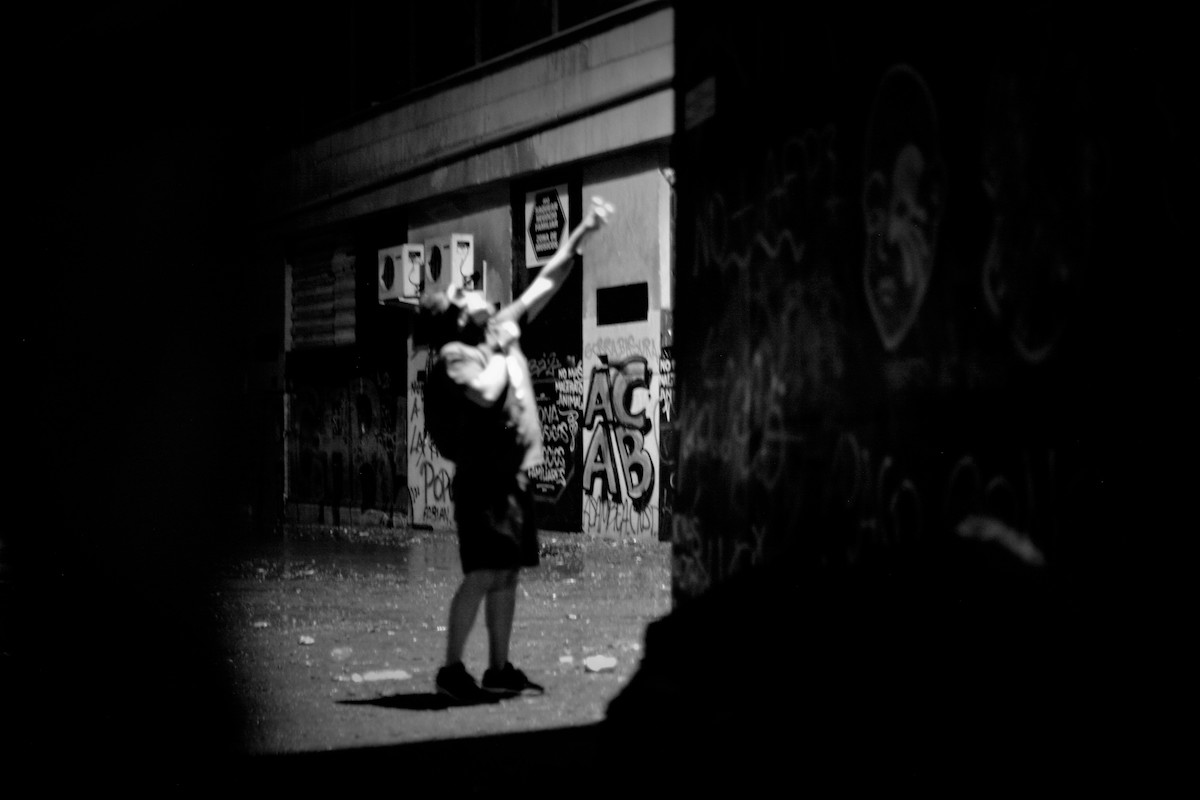A version of this article originally appeared on VICE Belgium.
Back in October 2019, Belgian photojournalist Aurian Merlin Cerise was visiting a friend in Buenos Aires, Argentina, when neighbouring Chile began sliding toward widespread social unrest. Within days, what began as a student-led protest against the rising costs of public transport in the capital of Santiago turned into a nationwide mass demonstration against inequality, corruption and the quality of life in the country.
Videos by VICE
A month on – and despite brutal attempts to quash the movement – the protesters had achieved more than what many had thought was possible. The government agreed to one of the protesters’ key demands: they’d organise a referendum to let voters chose whether to keep or discard the country’s constitution, written under Chile’s former far-right dictator, General Augusto Pinochet.
Chile’s Pinochet-era constitution created an electoral system biased in favour of incumbents, which disincentivized politicians from listening to voters and common people from running for office. It also enshrined radical neoliberal principles into law, making the provision of social rights – including to water, healthcare and education – the responsibility of private services rather than the state. These principles turned Chile into one of the wealthiest and most investment-friendly countries in South America, but they also created massive inequality and discontent.
A year after the protests, the 2019 movement for constitutional reform won the vote. Not only that – Chileans arguably elected the most progressive constitutional assembly in the history of the world, with half of its members being women and a third representatives from Indigenous communities. The assembly is still at work, and is set to centre average people’s needs and environmental protection among the country’s new fundamental principles.
In December 2021, Chile also elected its new leader. Gabriel Boric, 35, came up through student protest movements with a progressive agenda, campaigning on promises to institute high-quality, free education for all. He’s now the youngest president in the world.

But back in 2019, when photojournalist Merlin was about to head to Santiago, nobody knew these historic wins were right around the corner. The clashes between the protesters and the carabineros, the Chilean police, quickly became extremely violent. Over thirty people were killed and thousands more injured. People reported being raped by the police, blinded on purpose by rubber bullets, kidnapped and tortured.
“Before long, I’d lost any notion of neutrality, even though I was documenting a reality without personally participating,” Merlin said. “Every town I passed through was turned inside out. The repression I saw was violent and unjust.” Eventually, a nation-wide curfew was set and a state of emergency declared to prevent people from gathering on the streets. “Only a few well-off neighbourhoods and rural communities were spared from the mayhem,” Merlin continued.
Eventually, the circumstances proved too dire for Merlin to remain removed from the scenes he was documenting. During one of the protests, while the police was charging at the crowd, he sustained a head injury, although he doesn’t know exactly who dealt the blow. The next day, Merlin decided to quit his job reporting for a news agency and help out people from the movement he’d previously met.
In time, the events in Chile became an inspiration for progressive movements worldwide, especially over these past two years marked by the pandemic. After all, the issues at play in the Chilean revolution go beyond the country’s own political problems. “Globalised neoliberalism and the inequalities it causes concern everyone,” Merlin said. “I might not be Chilean, but I was overcome by the sense of a shared fight against injustice. I felt I was exactly where I needed to be.”
Scroll down to see more of Merlin’s pictures of the time:
























